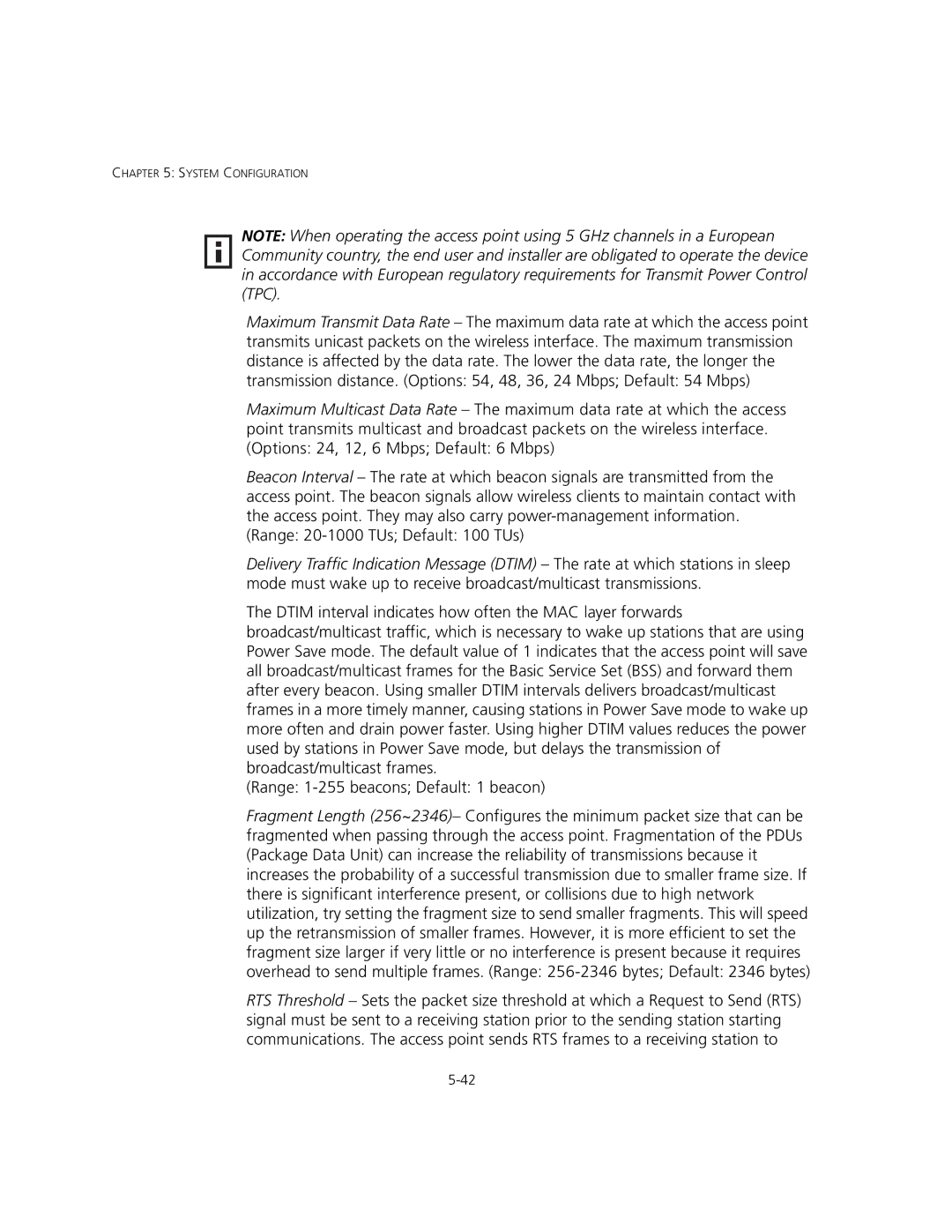CHAPTER 5: SYSTEM CONFIGURATION
NOTE: When operating the access point using 5 GHz channels in a European Community country, the end user and installer are obligated to operate the device in accordance with European regulatory requirements for Transmit Power Control (TPC).
Maximum Transmit Data Rate – The maximum data rate at which the access point transmits unicast packets on the wireless interface. The maximum transmission distance is affected by the data rate. The lower the data rate, the longer the transmission distance. (Options: 54, 48, 36, 24 Mbps; Default: 54 Mbps)
Maximum Multicast Data Rate – The maximum data rate at which the access point transmits multicast and broadcast packets on the wireless interface. (Options: 24, 12, 6 Mbps; Default: 6 Mbps)
Beacon Interval – The rate at which beacon signals are transmitted from the access point. The beacon signals allow wireless clients to maintain contact with the access point. They may also carry
Delivery Traffic Indication Message (DTIM) – The rate at which stations in sleep mode must wake up to receive broadcast/multicast transmissions.
The DTIM interval indicates how often the MAC layer forwards broadcast/multicast traffic, which is necessary to wake up stations that are using Power Save mode. The default value of 1 indicates that the access point will save all broadcast/multicast frames for the Basic Service Set (BSS) and forward them after every beacon. Using smaller DTIM intervals delivers broadcast/multicast frames in a more timely manner, causing stations in Power Save mode to wake up more often and drain power faster. Using higher DTIM values reduces the power used by stations in Power Save mode, but delays the transmission of broadcast/multicast frames.
(Range:
Fragment Length (256~2346)– Configures the minimum packet size that can be fragmented when passing through the access point. Fragmentation of the PDUs (Package Data Unit) can increase the reliability of transmissions because it increases the probability of a successful transmission due to smaller frame size. If there is significant interference present, or collisions due to high network utilization, try setting the fragment size to send smaller fragments. This will speed up the retransmission of smaller frames. However, it is more efficient to set the fragment size larger if very little or no interference is present because it requires overhead to send multiple frames. (Range:
RTS Threshold – Sets the packet size threshold at which a Request to Send (RTS) signal must be sent to a receiving station prior to the sending station starting communications. The access point sends RTS frames to a receiving station to
